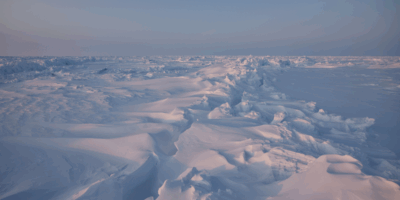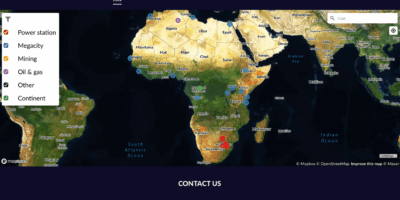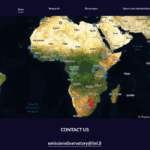Up to 40 satellites are about to descent back to the Earth right after the launch due to a sudden increase in air resistance. The reason for this is a space weather storm, which was also followed by the Finnish Meteorological Institute’s space weather service. New Finnish observations may help to refine forecasts in the future.
On the late evening (UTC) of January 29, an coronal mass ejection (CME) was observed in the Sun. The CME shook the Earth’s magnetic field for the next three days and gave rise to a minor geomagnetic storm.
The Finnish Meteorological Institute monitors space weather around the clock as part of the Luova disaster warning system. Efforts are made to anticipate exceptionally strong space weather storms, and when one begin, the space weather duty officer, in collaboration with other researchers in the field, will prepare bulletins. The bulletins are prepared according to commonly agreed criteria and are distributed to national authorities and international air traffic.
“This storm did not exceed these criteria, so there was no need to send warnings. However, we increased the probability predictions of northern lights, auroras, due to the storm” says Kirsti Kauristie, Chief science officer of the Pecasus consortium.
In the midst of a geomagnetic storm, on Thursday, February 3, SpaceX launched 49 Starlink communications satellites into space with its Falcon 9 rocket. They were initially launched into a very shallow orbit at an altitude of about 210 kilometers. From this shallow orbit, satellites were supposed to be transferred to their final orbits with their own engines. A few days later, however, the company had to report that most of the satellites were descenting back to Earth.
Geomagnetic storms involve electrical currents flowing in the upper layers of the atmosphere that will heat the air. When heating appears, the atmosphere expands upward, increasing the air resistance experienced by satellites on low orbits. Fluctuations in air resistance cause difficulties, especially for small satellites, such as the Starlinks.
SpaceX reports that the air resistance experienced by the satellites was up to 50% higher than in previous launches. As a result, as many as 40 satellites descent back into the Earth’s atmosphere without ever reaching their intended orbit. The satellites decay and burn when they descent into the atmosphere, so there is no danger in them.
Since solar CME were detected and a its hitting the Earth was predicted as early as January 29, the possibility of a geomagnetic storm was known several days in advance.
“Postponing the launch based on the space weather forecast to avoid a geomagnetic storm could have saved the satellite company from losing the satellites” said Tiera Laitinen, the Finnish Meteorological Institute’s space weather team leader.
More detailed forecasts for the future with Finnish solutions
The burst that caused the geomagnetic storm was also measured by the Sunstorm small satellite with its XFM X-ray spectrometer. Sunstorm is manufactured and operated by Kuva Space, and a consortium formed by Finnish companies. It was launched into space in August 2021 by the European Space Agency (ESA).
“The CME was exceptionally long-lasting, and in addition, the shape of the spectrum anticipated a stronger-than-usual electron current from the space storm. XFM is also capable of measuring high energy electrons. On February 4, it detected electron flux values that were magnitude higher than normal” says Juhani Huovelin of Isaware Oy, which is responsible for developing the measuring device and analyzing the data.
XFM distinguishes between different wavelengths of solar X-rays more accurately than the devices currently operationally used by space weather services. The ability to measure electron flux also increases the usefulness of the instrument. With the help of these measurements, changes in density at low orbits can be predicted even more accurately in the future.
Indeed, a new version of the XFM is already being planned for the U.S. National Oceanic and Atmospheric Administration (NOAA) for the next SWFO space weather satellite, which will be launched in 2025. These devices can be most effectively utilized in space weather predictions when placed on low-orbit satellites.
Space situational awareness will be expanded
The monitoring of the space situational situation will also be expanded on the ground in Finland. A national space situational awareness center is currently being planned to monitor satellites and other objects moving in the near space, as well as space weather, in cooperation with the EU space surveillance system.
“The space situation center will be established as an extension of the Finnish Meteorological Institute’s 24/7 space weather service” says research professor Ari-Matti Harri.
The descent of satellites back to Earth is one example of things that the Space Situation Center will follow over time and share information with the authorities in cooperation with the National Land Survey of Finland.
More information
Group Manager Tiera Laitinen, Finnish Meteorological Institute, tel. +358 50 380 3279, tiera.laitinen (at) fmi.fi
Head of Unit Ari-Matti Harri, Finnish Meteorological Institute, tel. +358 50 337 5623, ari-matti.harri (at) fmi.fi








Leave a Reply
You must be logged in to post a comment.